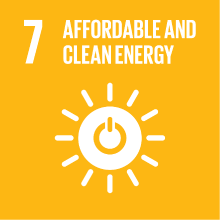FUNDAMENTALS OF SPECTROSCOPY
- Academic year
- 2022/2023 Syllabus of previous years
- Official course title
- FUNDAMENTALS OF SPECTROSCOPY
- Course code
- CM1304 (AF:374637 AR:210621)
- Teaching language
- English
- Modality
- On campus classes
- ECTS credits
- 6
- Degree level
- Master's Degree Programme (DM270)
- Academic Discipline
- CHIM/02
- Period
- 2nd Semester
- Course year
- 1
- Where
- VENEZIA
- Moodle
- Go to Moodle page
Contribution of the course to the overall degree programme goals
Within this framework, the course will provide a rigorous treatment of the spectroscopic phenomenon, covering the theoretical grounds as well as the corresponding formalism. The course will introduce also some relevant techniques employed for the spectroscopic characterization and investigation of biological molecules and macro-molecules, and for the studies on functionalized surfaces.
Expected learning outcomes
- have acquired a deep knowledge and understanding of both the theoretical concepts used in spectroscopy and the different formalisms employed;
- have acquired the knowledge of some relevant spectroscopic techniques for characterising biological macromolecules and studying functionalized surfaces;
- be able to apply the different formalisms for rationalising the outcomes coming from the different spectroscopic characterisation techniques discussed during the course, also using some softwares.
Pre-requirements
Concerning the students enrolled at the Master's Degree Programme in Science and Technology of Bio and Nanomaterials (CM12), please remember that they must pass the exam of the course "Mathematical Methods for Physics" before this exam (i.e., the one of "Fundamentals of Spectroscopy"); besides, they may find the basic concepts on quantum-chemistry required as pre-requisites of this course in the preparatory course "Principles of Physical Chemistry".
Concerning the students enrolled in the Master's Degree Programme in Sustainable Chemistry and Technologies, please remember that they should know (and be able to apply) the basic concepts of quantum chemistry (to have attained the educational objectives of the corresponding course, possibly but not necessarily having passed the corresponding exam). Besides, they should already know the basic concepts on spectroscopy (IR spectroscopy and 1H-NMR spectroscopy, and the interpretation of their corresponding spectra) typical of the three-year degree courses in Chemistry .
Contents
Hilbertian vector space, Hermitian operators and their properties. Schrödinger wave equation: time-dependent and time-independent equation. The generalized uncertainty principle; the quantum mechanical virial theorem. Approximate solutions to the Schrödinger equation: perturbation theory for non-degenerate states and for degenerate states; the variation method. Examples and applications. Processes of induced absorption, induced and spontaneous emission, and their corresponding Einstein transition-probability coefficients. Transition moment. Electric and magnetic interactions. Selection rules. Classification of spectroscopies. The harmonic oscillator, its eigenvalues and eigenfunctions. Spectroscopy of the harmonic oscillator. Extension to polyatomic system: normal modes of vibration.
INFRARED (IR) SPECTROSCOPY AND SOME EXPERIMENTAL TECHNIQUES
The vibrating diatomic molecule and the anharmonic corrections. Polyatomic molecules: selection rules. Examples of infrared spectra. Discussion of some relevant modern experimental techniques: Attenuated Total Reflection (ATR) IR spectroscopy, Surface Enhanced InfraRed Absorption Spectroscopy (SEIRAS), Reflection-Absorption IR Spectroscopy (RAIRS), and Diffuse Reflectance Infrared Spectroscopy (DRIFT).
RAMAN SPECTROSCOPY: basic concepts and experimental apparatus; SERS and TERS techniques.
NUCLEAR MAGNETIC RESONANCE (NMR) SPECTROSCOPY
Review of spin angular momentum operators and their properties. Spin rotation and spin projection operators. Spin precession and Larmor frequency. The density matrix formalism and its application in NMR. Radio frequency pulse. Bloch equations and their solutions in laboratory (fixed) axes and rotating axes. Relaxation processes: longitudinal (spin-lattice) and transversal (spin-spin) processes. Description of the NMR instrument. The phase correction. Hard and Soft pulses: their effects and uses.
Descriptions of the main Hamiltonians employed for describing NMR spectroscopy. Direct product spaces. Product operator formalism. In-phase and anti-phase magnetization and their interconversion. Coherence quantum transfer. Description and analysis of some pulse sequences within the product operator formalism. The INEPT experiment (Insensitive Nuclei Enhanced by Polarization Transfer).
Bi-dimensional (2D-) NMR. Homo-nuclear and hetero-nuclear 2D-NMR spectroscopy. Description of some 2D-NMR experiments within the product operator formalism: homo-nuclear COrrelation SpectroscopY (COSY); Double Quantum-Filtered COSY (DQF-COSY); HETero-nuclear CORrelation spectroscopy (HETCOR); Heteronuclear Multiple Quantum Coherence (HMQC); Heteronuclear Multiple Bond Coherence (HMBC). Examples and applications. Solvent suppression techniques: pre-saturation and pulse sequences WET, WATERGATE and WASTED.
Referral texts
D. J. Griffiths, “Introduction to Quantum Mechanics”, Cambridge University Press, 2nd edition, 2016.
For the optical spectroscopies, the textbook mainly used in the course is
J. M. Hollas, “Modern Spectroscopy”, 4th edition, Wiley, 2003.
For the magnetic spectroscopies, the textbook mainly used in the course is
N. E. Jacobsen “NMR SPECTROSCOPY EXPLAINED: Simplified Theory, Applications and Examples for Organic Chemistry and Structural Biology”, John Wiley & Sons, 2007.
Assessment methods
It consists in a series of questions about the different topics covered in the course; the student will be asked also to apply the different formalisms for describing a given spectroscopic experiment, and to justify the corresponding outcomes.
Besides, a short presentation (by slides in ppt format, 8 minutes max) on one application of spectroscopy for solving a chemical problem.
Type of exam
Teaching methods
For the students enrolled at Master's Degree Programme in Science and Technology of Bio and Nanomaterials, at least 70% of lecture attendance is required to pass the course.
The slides employed during each lecture (and the corresponding supplementary material) will be downloadable from the MOODLE web pages.
Further information
Accommodation and support services for students with disabilities and students with specific learning impairments:
Ca’ Foscari abides by Italian Law (Law 17/1999; Law 170/2010) regarding support services and accommodation available to students with disabilities. This includes students with mobility, visual, hearing and other disabilities (Law 17/1999), and specific learning impairments (Law 170/2010). In the case of disability or impairment that requires accommodations (i.e., alternate testing, readers, note takers or interpreters) please contact the Disability and Accessibility Offices in Student Services: disabilita@unive.it.
STRUCTURE AND CONTENT OF THE COURSE COULD CHANGE AS A RESULT OF THE COVID-19 EPIDEMIC.
2030 Agenda for Sustainable Development Goals
This subject deals with topics related to the macro-area "Climate change and energy" and contributes to the achievement of one or more goals of U. N. Agenda for Sustainable Development


